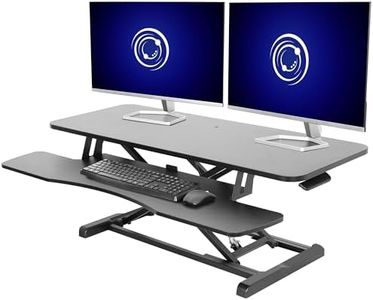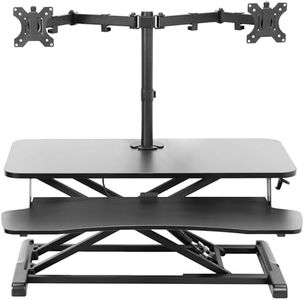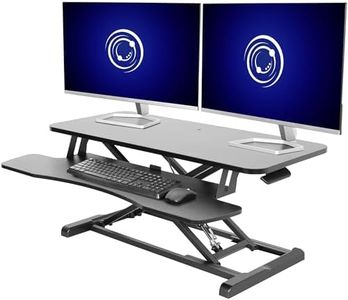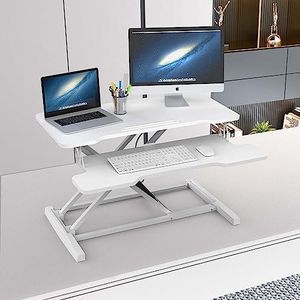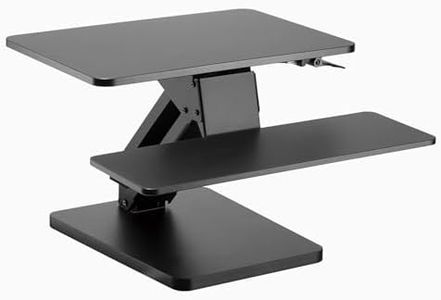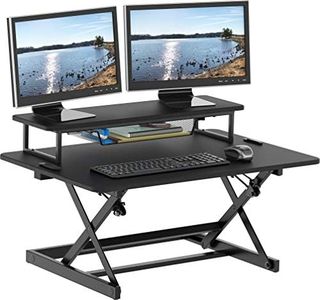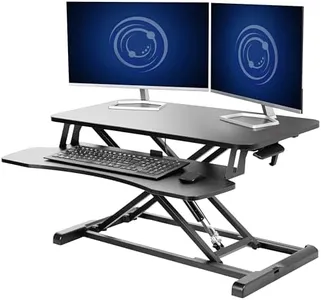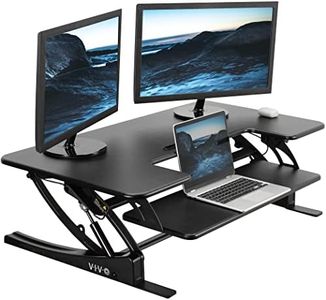We Use CookiesWe use cookies to enhance the security, performance,
functionality and for analytical and promotional activities. By continuing to browse this site you
are agreeing to our privacy policy
10 Best Standing Desk Converters
From leading brands and best sellers available on the web.Buying Guide for the Best Standing Desk Converters
Choosing a standing desk converter is a great way to transform a regular desk into a flexible workspace that lets you switch between sitting and standing throughout the day. The best way to start your search is by thinking about your daily tasks, your workspace layout, and what feels most comfortable for your height and work style. Focus on finding a converter that is stable, easy to adjust, and suits your current desk and equipment. By considering a few key specs and features, you'll be able to pick a product that keeps you healthy and makes your workday more comfortable.Height Adjustment RangeHeight adjustment range refers to how high or low the converter can raise your work surface. This is important because it determines if you can set the surface at a level that's ergonomic for both sitting and standing. Lower ranges (around 4-15 inches) may be enough for petite users or shorter desks, while larger ranges (15-22 inches or more) are better for taller users or standing on the higher end. Make sure to choose a converter whose range can match your height so your elbows remain close to a 90-degree angle while typing, and your monitor is at eye level.
Work Surface SizeThe work surface size describes the actual space you have for your computer, monitor, keyboard, mouse, and any other desk items. Smaller converters offer compact surfaces ideal for laptops or minimal setups, while larger ones can accommodate multiple monitors and accessories. Pick a size that fits your work essentials without overcrowding, and ensure it fits comfortably on your existing desk.
Weight CapacityWeight capacity tells you how much weight the converter can safely hold. If you use lightweight laptops, most converters will be sufficient, but dual monitors or heavy desktop computers need higher weight limits. Choosing one that's strong enough to support your gear ensures safety and stability.
Adjustment MechanismAdjustment mechanism refers to how you raise or lower the converter. Some use manual levers or handles, others have gas springs for smoother lifting, and a few offer electric adjustment. Simple manual systems can work for light loads and occasional adjustments, while gas spring and electric mechanisms make frequent switching easier and less physically demanding. Pick a method that matches how often you expect to switch between sitting and standing.
Keyboard TrayMany converters include a separate keyboard tray. This allows your keyboard and mouse to move independently from the monitor, making it easier to maintain a comfortable posture. Fixed trays suit basic typing, while adjustable or removable trays support varied working styles and setups. Choose a tray that fits your keyboard and mouse comfortably and can be adjusted to the right height.
StabilityStability measures how steady the converter feels, especially when it's fully extended. A wobbly surface can be distracting and make working unpleasant. Designs with wide, solid bases and sturdy construction usually provide better stability. If you type vigorously or use multiple monitors, prioritize stable models.

